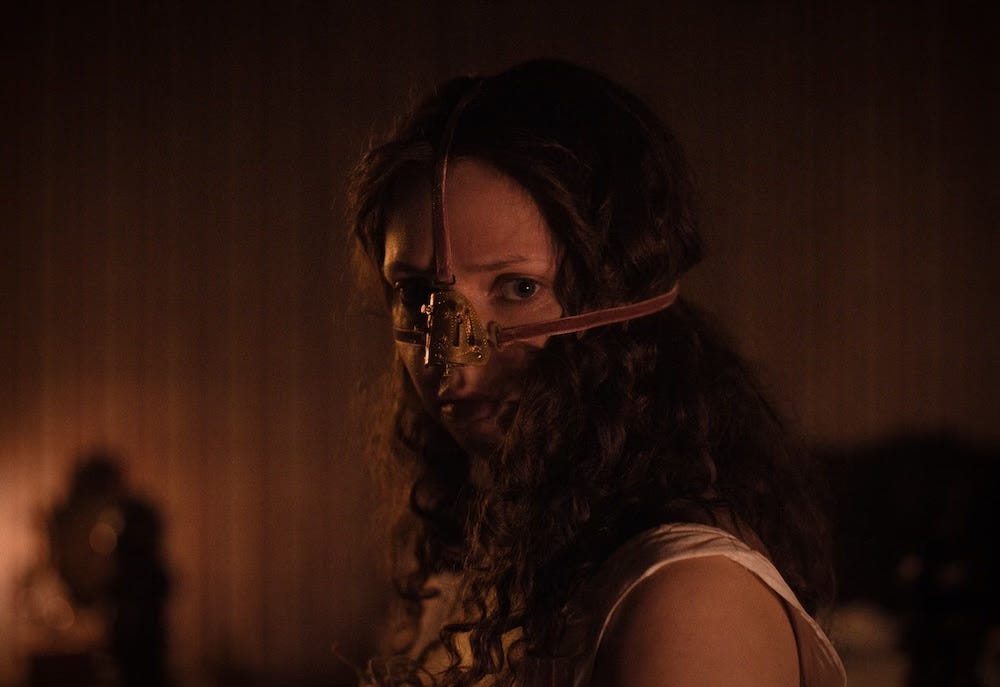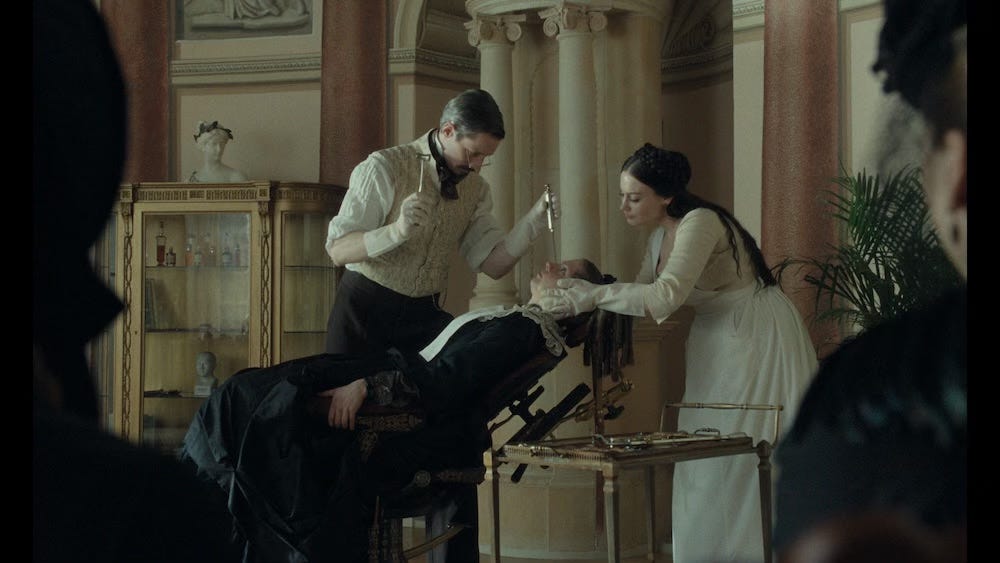Shifting Shadows: The Ugly Stepsister Redefines Horror Through New Perspectives
The Ugly Stepsister is a thrilling, inventive reimagining of the classic fairy tale Cinderella, but with a fascinating and unexpected twist. Directed with a keen sense of psychological tension and gothic flair, the film places a fresh, unique spin on a well-worn story by focusing on the character of the stepsister—often sidelined in traditional adaptations—and reexamining her narrative through a darker, more sinister lens. What emerges is a horror-infused tale that challenges the conventions of the fairy tale genre while delving deep into themes of jealousy, family dynamics, and the human desire for validation.
At its core, The Ugly Stepsister invites viewers to experience the familiar story from an entirely new perspective. By shifting the focus to the stepsister, the film expertly explores the emotional undercurrents of envy, insecurity, and rejection that have long been relegated to the background in previous retellings of Cinderella. Rather than painting her as a simple villain, the movie gives us a complex, multifaceted character whose motivations are grounded in her own trauma and unfulfilled desires. This narrative shift is not only refreshing but deeply enriching, as it highlights the importance of seeing stories from different points of view—a key aspect that adds to the depth and power of horror as a genre.
The stepsister, played by an exceptional actress whose performance resonates with vulnerability and quiet rage, becomes a compelling anti-heroine. The film does not shy away from showcasing her darker impulses, but it also allows us to see the deep psychological scars that drive her behavior. Her cruelty towards Cinderella is revealed as a response to years of being overlooked, belittled, and cast in the role of the "ugly" stepsister—both literally and metaphorically. Through clever writing and haunting visuals, the movie emphasizes how societal standards of beauty, love, and success can warp a person’s sense of self-worth, leading them down a path of resentment and obsession.
What makes The Ugly Stepsister stand out is how it uses horror elements not just for shock value but to explore deeper emotional and psychological themes. The atmosphere is laden with tension, and the horror doesn’t merely stem from supernatural forces but from the oppressive weight of family dynamics, personal insecurities, and societal expectations. The film’s chilling moments are punctuated by the stepsister’s gradual descent into madness, as she becomes increasingly fixated on the idea of making Cinderella pay for the perceived injustices she’s suffered. It’s a chilling reflection of how unchecked jealousy and emotional neglect can transform into something far more sinister.
The film shares thematic similarities with another recent horror gem, In a Violent Nature (2024), which also explores the concept of shifting perspectives in storytelling. Both films deconstruct the traditional understanding of villainy, casting light on characters that are typically viewed through a one-dimensional lens in conventional narratives. In In a Violent Nature, the protagonist’s descent into violence is examined from a psychological standpoint, urging viewers to consider the emotional and societal factors that contribute to her dark transformation. Similarly, The Ugly Stepsister doesn’t merely depict the stepsister as a figure of evil but invites us to understand her through her experiences of emotional trauma, rejection, and bitterness. Both films are powerful examples of how horror can provide a more complex, empathetic perspective on characters traditionally seen as antagonistic.
This shift in perspective enhances the emotional depth and potential of horror, proving that it’s not just about scares and shock tactics, but about exploring the intricacies of human nature. The Ugly Stepsister humanizes its villain, offering us a window into her psyche and making her actions both understandable and chilling. In doing so, it elevates the horror genre beyond its typical tropes, demonstrating that the true terror often lies in the emotional and psychological unraveling of its characters.
One of the most powerful aspects of the film is how it challenges the traditional understanding of villainy. By telling the story from the stepsister's perspective, The Ugly Stepsister deconstructs the binary of good versus evil that often dominates fairy tales. Instead of a simplistic portrayal of the stepsister as merely "ugly" or "evil," the film presents her as a product of circumstance—someone who is just as trapped in her own story as Cinderella, but on the other side of the glass slipper. This shift in narrative perspective allows for a more nuanced examination of what it means to be an outsider, to feel unworthy, and to struggle against the roles society imposes on you. In doing so, it enhances the emotional and psychological power of the horror genre.
The performances in The Ugly Stepsister are top-notch, with the lead actress delivering a gripping portrayal of a woman unraveling under the weight of her own bitterness and longing. The film’s cinematography is equally impressive, with dark, moody lighting that amplifies the psychological tension and builds a foreboding atmosphere. Every frame seems to echo the growing sense of unease and disquiet that permeates the narrative, pulling the viewer deeper into the stepsister’s world.
In conclusion, The Ugly Stepsister is an innovative and haunting film that expertly reimagines a classic fairy tale from a fresh, thought-provoking perspective. By focusing on the stepsister and delving into the emotional and psychological aspects of her character, the film not only adds depth to the horror genre but also emphasizes the importance of storytelling from diverse viewpoints. In doing so, it enriches the narrative, offering both a chilling and empathetic exploration of envy, self-worth, and the darkness that can arise from societal rejection. Much like In a Violent Nature, this film proves how changing perspectives within horror not only deepens the story but enhances the emotional impact, making it an essential watch for fans of the genre.





